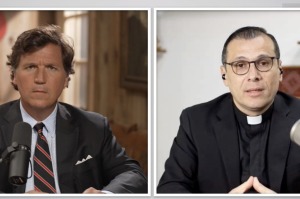Renewable Energy and the Poor
I’ll be the first to admit that the term “green” is overused and often exploited on the part of many groups to tout silly - even anti-human-agendas. And that’s a shame. Because when you define being “green” as simply being a good steward of God’s creation, we Christians have got a lot to offer - especially when it comes to caring for the human part of God’s creation; particularly the poor.
According to the World Bank, more than 1.4 million people worldwide - mostly in rural Asia and Africa - don’t have access to electricity, and about 3 billion use non-renewable materials like wood, charcoal, even waste, for cooking and heating. These sources are not only bad for the environment, but economically draining.
This past August, the U.N. Secretary General touted renewable energy sources - like solar energy, wind power, and hydropower - as a means to help lift the poor out of poverty. And for once, I find myself agreeing with the United Nations.
In Cambodia, for example, a typical kerosene lamp costs around $30 to light a home for a year - that’s about 10 percent of what an average Cambodian earns each year. But solar lanterns only cost $25 and can last for two years.
Although solar power is typically considered an expensive energy source, several years ago an Indiana man named Allen Rainey discovered that solar energy was a lot more affordable than grid electricity for his 50 acres he owned in rural Indiana. Solar power did everything grid electricity did, just without the monthly bill.
As a follower of Christ, Rainey wasn’t content to keep his discovery to himself. In 2001, he took a trip to Honduras with a medical missions group to help install solar powered refrigerators for a medical clinic that provided vaccines to prevented deadly childhood diseases. The following year, he returned to Honduras to help install solar lighting in churches and a backup power system for an emergency room. Later, he traveled to Kenya to install 25 solar systems in rural areas.
Not only were these energy improvements better for the environment, but they were much more sustainable for those with limited financial resources. Each solar power system would last 30 years on its own, and Rainey and his team trained the local residents to maintain these systems into future decades. Now that’s true sustainability and a perfect reflection of biblical stewardship!
To date, Rainey and his organization - SonLight Power - have also installed solar power in orphanages, hospitals, and churches in Guatemala, Haiti, Equador, Ethiopia, and Mexico.
SonLight isn’t the only group that has discovered creative ways to care for both the environment and the poor. A group called Plant with a Purpose plants trees in highly deforested areas in Tanzania, which allows locals to grow more crops to both consume and sell for a living. Another organization called Food for the Hungry purifies and protects water sources for those without access to clean water.
These examples demonstrate that instead of existing as two separate agendas, environmental sustainability and the fight to end poverty are inextricably linked.
Now don’t get me wrong, care for God’s creation should never trump caring for those who are made in His image. But often, we can and should do both at the same time..



























